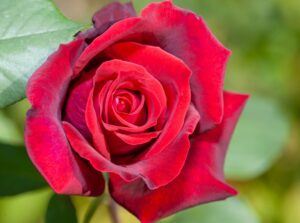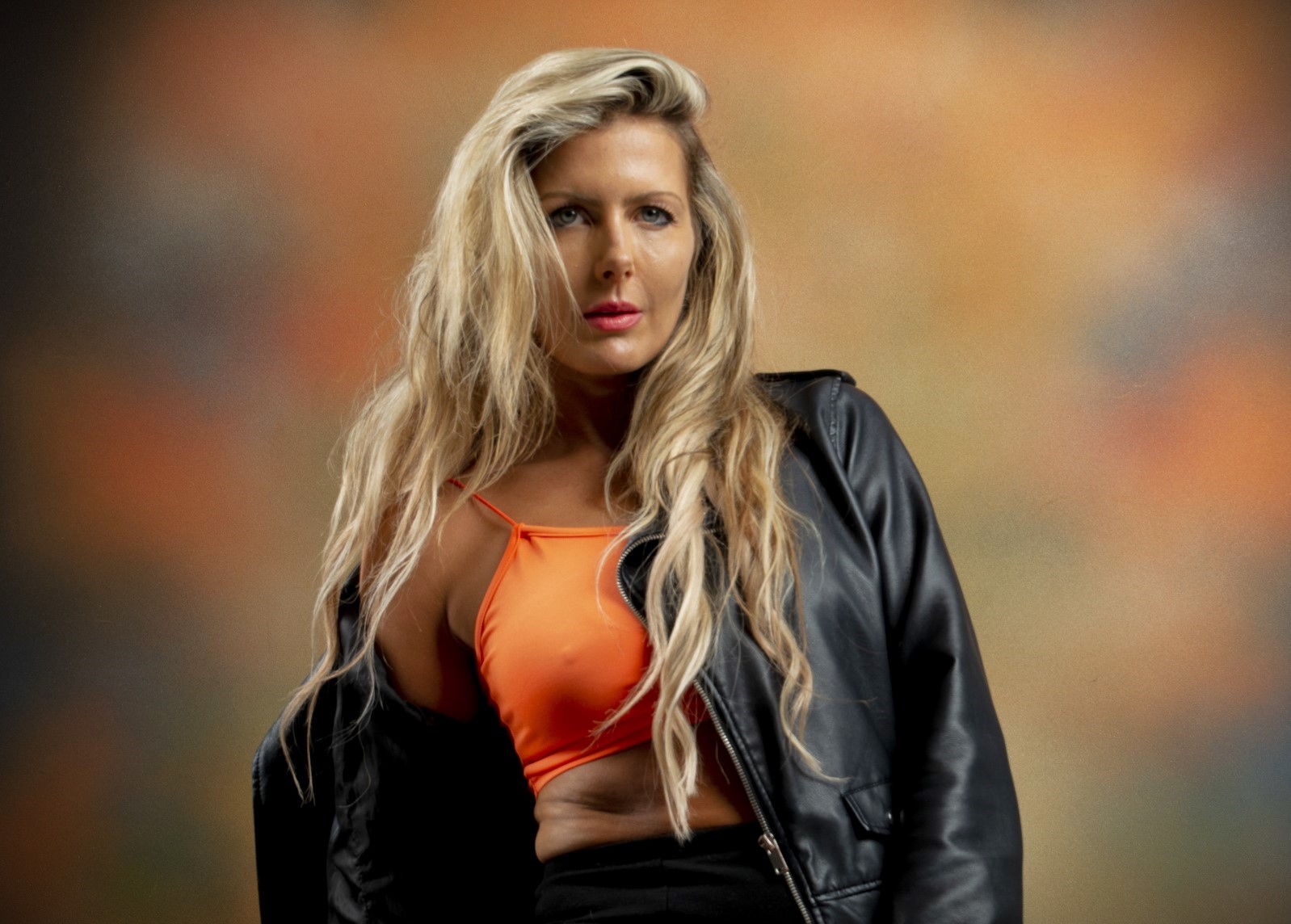Bokeh, pronounced as ‘BOH-KAY,’ is one of those magical elements in photography that can transform a good picture into a great one. Simply put, it refers to the aesthetic quality of the blur produced in the out-of-focus parts of an image. This effect, often seen as soft, circular lights or a gentle, dreamy blur, helps to make the subject of the photo stand out more vibrantly. I took the portrait photo above, The model’s name is Victoria Summer.
‘Bokeh’ comes from the Japanese word, which translates to ‘blur’ or ‘haze.’ Unlike many technical terms in photography, bokeh carries an artistic flair. Photographers worldwide use it to add a touch of elegance to their images, giving them a distinct feel and enhancing the visual appeal.

Technically speaking, bokeh is achieved when the background of an image is intentionally kept out of focus. This is often done using a wide aperture setting on the camera lens, which narrows the depth of field. With this, the subject remains sharp and clear while the background melts into a beautiful blur. The shape and appearance of this blur can vary based on the lens used, with some lenses offering a creamier or more circular bokeh and others producing a fun, bubbly effect.
Different types of bokeh can add unique touches to your photos. Creamy bokeh lends a smooth, delicate background that feels almost velvety. Bubbly bokeh creates a playful atmosphere with small, round light bursts, while swirl bokeh gives the image a dynamic sense that’s full of motion. Understanding these variations helps us to select the right lens and settings for the desired outcome.
How the Bokeh Effect Enhances Your Images
Bokeh isn’t just a fancy photography term; it’s a powerful method that can significantly elevate the quality of your images. One of the primary benefits is how it naturally separates the subject from the background. When everything behind the subject is beautifully blurred, all attention gravitates toward the focal point. This isolation enhances the subject’s importance and makes it the undeniable star of the photo.
Beyond just directing attention, bokeh adds a layer of aesthetic sophistication. The soft, dreamy background creates a pleasing contrast to the sharp subject, giving the image an artistic touch that’s visually appealing. Many portrait photographers will choose to have bokeh frequently in portrait photography, where creating an intimate, focused vibe is crucial.
The emotional pull of bokeh is another reason why it’s so beloved. A well-executed bokeh effect can evoke feelings of nostalgia, romance, or tranquility, depending on how it’s used. The gentle blur can make a scene feel warmer and more inviting, stirring up emotions in a way that sharp backgrounds often can’t.
Take iconic images, for instance. Many famous photos that stick in our minds use bokeh to add depth and emotion. Whether it’s a close-up shot of a loved one with a softly glowing background or a cityscape where the bustling city lights blur into orbs of color, bokeh helps tell a story that sticks with you long after you’ve looked away.
Achieving the Perfect Bokeh: Techniques and Tools
Creating that stunning bokeh effect involves mastering the techniques. To start, the lens is your best friend here. Prime lenses (those with a fixed focal length) are often preferred for their wide aperture capabilities. A lens with an f/2.8 or even wider aperture lets in more light and narrows the depth of field, making that background blur beautifully.
Adjusting the aperture is another key step: the wider the aperture (indicated by a smaller f-number), the shallower the depth of field. If you want to achieve creamy, out-of-focus backgrounds, set the aperture to a wide-open setting. For instance, f/1.4 or f/2.8 would be an ideal setting, with an aperture of 5.6 can also achieve bokeh especially if outside on a sunny day.
Distance plays a crucial role too. The gap between your camera, subject, and background affects the intensity of the bokeh. Aim to position your subject closer to the camera leaving a significant distance between the subject and the background. This setup accentuates the bokeh effect, making it more pronounced and pleasing.
Don’t forget about post-processing. While capturing bokeh in-camera is a skill worth mastering, enhancing it during editing can take your photos to another level. Software like Adobe Lightroom/Classic or Photoshop offers tools to fine-tune the blur.
By combining your equipment, the right camera settings, and strategic positioning, you’ll be well on your way to mastering the bokeh effect. Each shot turns into a carefully crafted piece of art, showing off your subject in the best light possible.
Practical Applications of the Bokeh Effect in Photography
Bokeh isn’t just for portraits; it can be creatively applied in various photography genres to make your images pop. In portrait photography, bokeh draws all the attention to the subject, making the person or face stand out crisply against a stunningly blurred backdrop. This technique works wonders for both formal portraits and casual, candid shots.
In macro photography, bokeh helps in emphasizing the intricate details of tiny subjects like flowers, insects, or small objects. Fine lines and textures of these small subjects appear sharper against a blurred background, giving the image a high-impact, professional look.
Urban and street photography also benefits from bokeh. Capturing the hustle and bustle of city life with blurred lights and movements in the background creates a dynamic contrast. The lights from cars or street lamps turn into artistic orbs, adding a unique touch to the story you’re telling through your images.
Lastly, bokeh opens the door for creative projects. With different shapes and colors, why not experiment to give your photos a whimsical, fairy-tale quality? Custom bokeh shapes, achieved with special lens filters, allow for endless creativity. Hearts, stars, or even custom filter patterns can be used to match the mood of your project perfectly.
So, in photography, bokeh, derived from the Japanese word for “blur,” refers to the pleasing aesthetic quality of the out-of-focus parts of an image. Achieved with wide apertures, it isolates the subject, adds artistic elegance, and evokes emotion. Mastery of lenses, aperture settings, and post-processing enhances this effect, making images truly captivating
Thank you for your time
Robbie


This article really captures the magic of bokeh and its transformative power in photography. I’ve always found bokeh fascinating, especially how it can turn an ordinary shot into something truly artistic. I’ve experimented with creamy bokeh in some of my portraits, and the difference it makes is remarkable—there’s just something about that dreamy blur that draws you in. Also, your tips on using a wide aperture and considering distance between the subject and background are super practical, especially for those just starting to explore this technique. This piece is a great reminder of how subtle elements like bokeh can elevate an image, making it not just a photo but a work of art.
Thank you so much for your thoughtful comment! I’m thrilled that the article resonated with you and that you share the same passion for bokeh! It is amazing how this element can transform a photo into something magical and artistic. Your experience with creamy bokeh in portraits sounds incredible—I completely agree that it adds a dreamy quality that pulls you into the image. I’m glad you found the tips practical, especially for beginners. It’s exciting to see that subtle techniques can elevate photography to a new level.
Best Regards,
Robbie